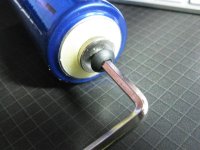BMI
100 W
miro13car said:Olaf,
What puzzle me why they abondoned well profen threaded stud terminal design.
MC
Easy answer. It was quite often a case of customers overtightening cells and snapping off the terminals since they are hollow and soft (aluminium/copper).
The factory engineers decided it was a better cell design to use an internally threaded terminal rather than threaded studs. I agree also. It makes for a more compact cell.
View attachment 10Ah PSI style vs LiFeTech XPS cell size comparison.JPG


![draw40138f1[1].jpg draw40138f1[1].jpg](https://endless-sphere.com/sphere/data/attachments/20/20216-258bd801b15716848255a37bc7b59f39.jpg)




